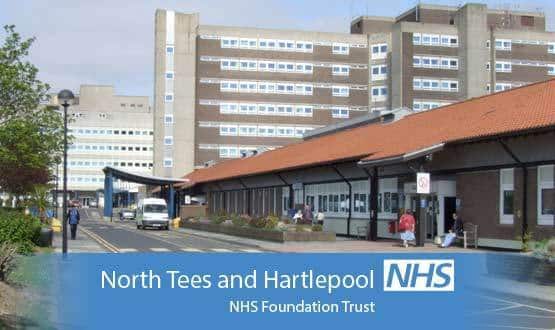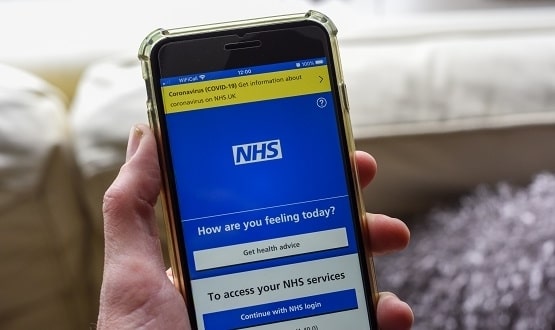Technology developers should shadow nurses, new report suggests

Technology firms should consider shadowing nurses to fully understand their workflows and inform the creation of solutions that work for them, a new report has suggested.
The report – ‘Clinical documentation and nurses: the challenges and opportunities’, which has been published by software firm Nuance Communications – draws on discussions at a roundtable event held last year.
The roundtable was chaired by Anne Cooper, chief nurse at NHS Digital, who said the aim was to encourage nurses to imagine “how technology could be used better”.
“Nursing is really complex, there are so many different flows. So one solution [to building good software] could be for technology companies be right there with them [nurses] so they can understand what nurses do,” Cooper told Digital Health News.
She continued: “We are in a watershed moment where we rely increasingly on electronic patient records and if we don’t get some of the fundamentals right, then the risk is we will build on sand.
“We need to reflect the reality of what is happening in practice.
“Technology can enable a different way of working, but it has to be the right technology and nurses have to say what they need.”
To that end, Cooper said NHS Digital and the Royal College of Nursing (RCN) are currently preparing to launch a UK-wide consultation to explore the use of digital technology in nursing.
Nurses can have their say in the online workshop which launches on 25 January.
It is hoped the results of the project will help RCN’s call for improved education, training and development on digital literacy.
It is also part of RCN’s “every nurse an e-nurse” campaign. As previously reported by Digital Health News, the aim is that by 2020 every nurse will be able to use technology and data to maximum effect for patients, carers and service users.
“The workshop is about getting to the core of what nurses are thinking and it’s exciting,” Cooper said.
Late last year, Health Education England ran an online workshop to inform its Building a Digital Ready Workforce programme. Results are expected to be published in the coming weeks.





14 Comments
trying to get User Experience Design – into procurement and – accepted by trust purchasing – and enforceable.
Is in my experience – very difficult.
very effectively written. it was actually lovely to read. Giving onto forward for More of it. Try to keep up the good work
I am really pleased to see this and that Anne Cooper is involved.
My concern, and those of the nurses and nursing students who have disabilities I support, is accessibility and compatibility with assistive technology.
Whatever is implemented it has to be interactive, effective and efficient – too often it is a glorified pen and paper – and multifunctional to be truly inclusive. When technology is inclusive then everyone benefits. There is a high percentage of staff who have English as a second language, have disabilities in the NHS and this will continue to rise as our working population ages. Therefore, the technology used has to be able to be used with ease by this population too.
Accessibility must be a prime element and not be overlooked or included as a bolt-on .
This is nothing new and sounds like re-inventing the wheel. User co-design was used in the 80’s and 90’s for English National Board for Nursing CAL project and by many systems vendors since then.
It is embedded into our development culture in digitally mature and exemplar acute sites whose development teams have clinicians working both with and as system developers ensuring that clinicians and patients needs are foremost in all system implementations
Let us take this a stage further, and shadow not just nurses but patients. Then, at last, we might get patient-friendly systems.
Great idea Richard. One of the key intentions behind Family Assist (mentioned below) is to improve the relations between Healthcare providers and patients to improve the experience for both, and also gather vital feedback from patients. As it first went live back in August, I’m currently working with a team in Oracle who will perform in-depth research with Maternity Staff and Patients who have been and still are engaging with Family Assist to collate the data into a white paper.
One of the key components to the success of Somerset Cancer Register has been the involvement of clinicians, particularly Clinical Nurse Specialists. They have been instrumental in shaping the design of our product.
To enable this to happen more frequently and across the board, time has to be factored in to release nurses from their clinical duties to participate – not easy given the pressures and shortages of nursing staff. Business analysts should work alongside nurses so that both skill sets come together for software development, as there is a real art to this!
Very sensible indeed… in fact, I can recall doing this sort of thing as a Change Consultant while in the employment of one of the LSPs while designing a prescribing and meds administration system for a certain monolithic solution. This involved accompanying ward and meds rounds and shadowing pharmacist/technician, junior docs etc. etc. to see what they were doing and what was needed to transfer paper processes to useable electronic solutions.
Not sure how widespread this is these days, but I know my current organisation does invest in user experience design…
I can’t believe this hasn’t happened already!!
A couple of Domain Experts can’t be enough to program software required to computerise what are probably the most complex multiple workflows they are ever likely to come across.
Back in the days of I4H we developed a workflow algorithm with software developers. The team had representatives of nearly all the specialties and staff groups. Sadly aborted by the transfer to NPfIT, with somewhat different priorities, so never got to the shadowing on the shop floor stage.
This is an excellent point and well worth technology developers taking steps to achieve this vital know how into IT solutions. Having just built a appointment management, solution for the oncology department in the Bon Secours Health Plan in Ireland covering resource management and capacity planning, I can confirm we could not have achieved the configuration without the direct support of nurse management and the lead consultant in the Oncology department. As a result of the collaboration we were able to build a direct relationship between the demand for treatments and the capacity for Pharmacy to compound the required infusion on the day. The clear definition of the care pathways and the identification of capacity challenges within the case mix were all identified and highlighted by the Senior Nurse manager Ger Markey. Success would not have been achieved without this input and support.
This could be an approach that could start with nursing and expand to other fields. If we look at apps and software designed many could use a tip or two about other industries outside of IT… Great read!
Couldn’t agree more with this, fantastic idea. It was because the team at Oracle worked hand-in-hand with the Head of Midwifery at Western Sussex Trust we were able to develop the Family Assist digital care pathway as I say, designed with clinicians – for clinicians.
Sounds really very sensible, technology must help and support good practice if it is going to be adopted, but isn’t this what the business analysts should be doing already?
What this report describes is called User Experience Design. And yes, big tech firms need to do more of this. And NHS Digital should be expecting their suppliers to demonstrate how they will do this.
Comments are closed.